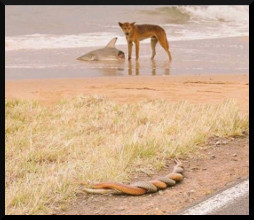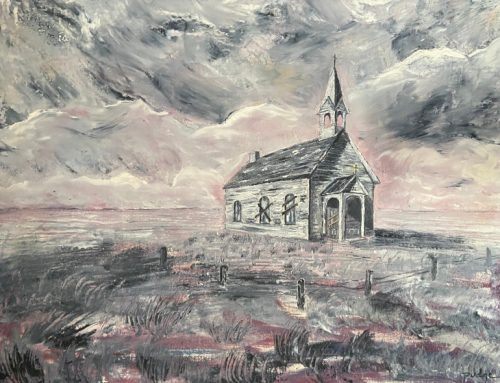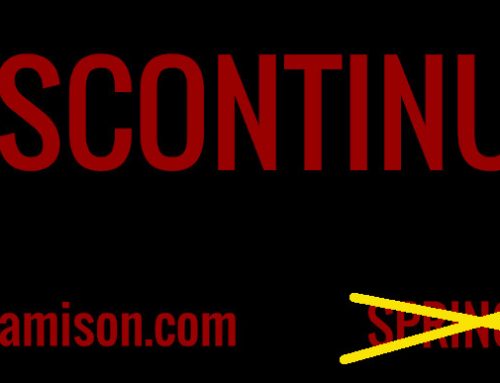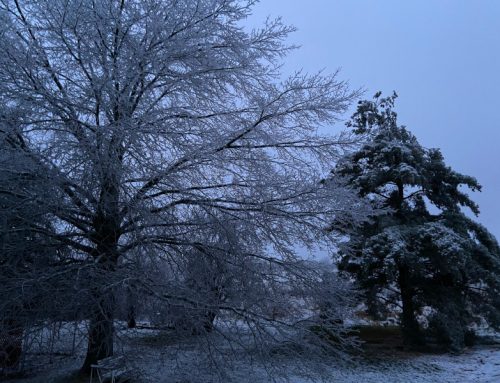Skip to content
A Dingo Eating a Shark and Two Snakes Making Love: My Self-Publishing Journey.
I didn’t have to self-publish. I have traditionally published 5 or 6 books in the past, and when I realized I was actually writing my first novel one of those previous publishers asked to look at it. I thanked them. But I had been hearing and reading so much about self-publishing, I decided that the best way to really understand it was to jump in and try it. Besides, I thought I was just going to write that one novel, if it ever actually did get finished, and that didn’t seem worth bothering a publisher with. Besides, it might be fun!
Now, with three novels and five children’s books on the shelf, and another four or five in the works, I am thinking about all I have learned as a self-published author, and rethinking that decision. It has been fun, I was right about that. It has also been extremely frustrating, at times downright irritating, and most of the experience has been like that picture, with me staring and mumbling, “What in the world?”
Before I go further, let me explain that I spent the first twenty-plus years of my career life as a pastor, which included a lot of preaching. And, that means I was very well trained in how to prepare and present the traditional “three-point-sermon”. I even had to take a few courses in that in Seminary. I didn’t do well in those courses. I did learn a lot in them though, most of all I learned that I truly hated three-point-sermons. For several years I served groups of three or four churches, and then the bigger churches that still had two, three, or four services. I just couldn’t hack listening to myself repeat the same three-point-sermon that many times every week, so I became a storyteller. After a couple of weeks of “Where did the sermon go?”, both my churches and I grew to like the new style. However, I have found there are times that the good, old, three-point approach is helpful. I told you all of that just to say that I’m now going to briefly mention the three, key points I have learned as a self-published writer. These aren’t “rules”. These are things I wish I would have known when I started my self-publishing. I am sure someone probably told (warned) me about them, but it took many, many hours of the Dingo-Shark-Snake, “Huh?” thing before I really understood them.

Number one: I needed to figure out just why I was writing in the first place. Honestly, I’m still working on that one. As I said above, when I began, I thought I was just writing to get that one story out of my head, and would then get back to the real world. The fact that my characters led me to the second novel was a shock, almost as much as when they brought the third one. And then the two grandkids sparked the ideas for the first children’s book, the second, third…I realized my initial “why” was no longer accurate. Yes, I still just had to get those stories out of my head, but now I also had the hope that somebody might read those stories. I was no longer just writing for me but was actually thinking about maybe becoming a, dare I say it, a writer. I started reading and listening to all of the advice, suggestions, rules about what it meant to be a writer. I think that’s when that shark washed up onshore. Many of the things I looked at stressed the importance of the “brand” and the fact that for a writer, you ARE the brand. Others, like a few of you reading this, just rolled their eyes when they heard the word “brand”, and stressed something else as most important. But for either side, the message was that I needed to be clear about who I was as a writer, so I could be “recognized” by that “following” I would want to create. If I was just writing for “me”, things were pretty simple. I wrote. I put my things online, and I relaxed. But, if I was writing because I wanted others to read my stuff, one way or the other I was going to have to find ways to get people to see my stuff, and give them enough of a reason to take a look at it. I realized I was no longer “just” a writer, and this is where that “publishing” part of Self Publishing comes in. And if I was my brand, what did that mean about me, being me? All I knew was that I told stories, some for adults, some for children, some for both, I just told stories. That worked for a while (maybe a week).
Number two: Once I (temporarily) decided my “brand”, or who I was, I was told I now needed to clearly define just who it was that I was writing for, who would want to read my stories. Many said that was the absolutely, number one, most important thing to get very clear, citing the classic marketing ideas of ‘target audience’, and things like that. I read more, even took a class or two, and was confronted by a dozen or so of those questionnaires wanting me to clearly identify the gender, age, and a long list of other characteristics of “my target readers”. I think this was when the Dingo arrived and I had my first thoughts about my decision to self-publish. Wouldn’t a traditional publisher figure all this out for me? Or, wait, maybe they would tell me what “target readers” I had to write for instead, and try to put me in a box? I started doing the research. Who was reading my books, and other books like mine? What could I find out about those people that might help me then “market” to others like them? I was told to use Facebook Ads, and told by others to absolutely avoid Facebook ads. I was told to spend time on Twitter, and told to avoid wasting my time on Twitter. I was told to put my books on Kindle Unlimited and told by others to not only avoid Kindle Unlimited but avoid Amazon entirely, because bookstores don’t like Amazon. I was told that if I want my books in libraries, I need to…well, most told me to “forget it”, because there were already too many books pitched at librarians every day. I think one of those snakes slid in at about this point.
Number three: Last Fall, after I thought I had my “brand” thing fairly well figured out, I had the opportunity to sign with a nice public relations company to promote my books. I soon realized that I didn’t have my “brand” thing figured out as well as I thought I did, and that second snake slithered into the side of the picture. From a PR/marketing audience perspective, I was a guy who wrote adult suspense/thrillers, and a second guy who wrote children’s books. The PR folks kept asking me to help pull it together, and help identify “my brand”, that “thing” that, when people saw or heard it would make them think of “me”. It was fine to write in more than one genre, but if you are still trying to build an identity, it helps if you can have one of those identity things to build on. I tried, “I am a storyteller”, but that sure didn’t sound like something that would get someone to pull a book from the shelf. Someone suggested, “I am an OLD storyteller”, which might narrow the market but still seemed like it was unlikely to lead to the same kind of response you get when you mention the name Stephen King.
Note: You may be asking if I seriously think I could ever get the Stephen King level of brand recognition? Well, we all have to have a dream, don’t we? Hey, maybe that’s it, “The Stephen King of Not-Horror!” Nah, probably not.
And this is where the one snake slither’s over to the other snake, winks, and they get all coiled-up on the sand, in front of the Dingo, eating the shark. I am still looking at me and my brand and saying, “What the heck?” I’ve tried the 30-Day Blog Challenge primarily to see if a “voice” grew out of it. That’s the other thing my PR folks have been asking about, “What is your voice?” Now that the 30 days are over, I’ll still keep blogging, but I’m also going to go back and read what I wrote in search of that “voice”. If you think you might hear it in there somewhere, I would love to know just what it was that you heard!
My PR folks would love it even more.
Share This Story, Choose Your Platform!
Page load link





